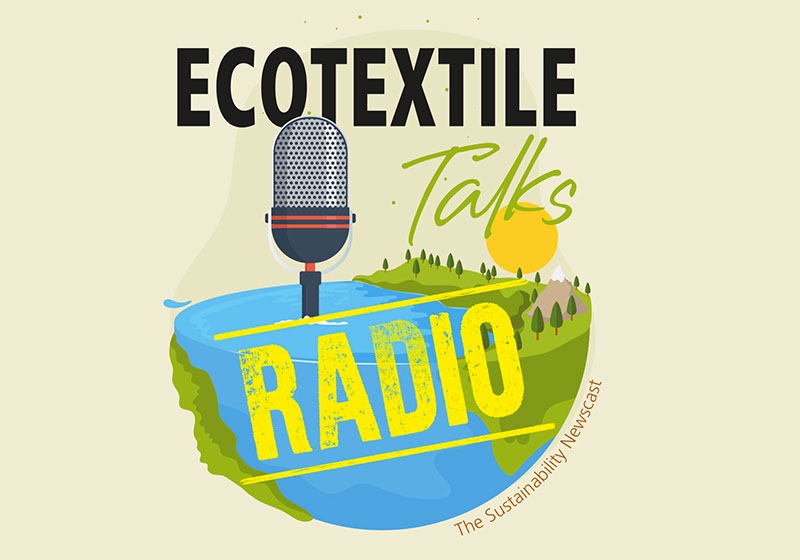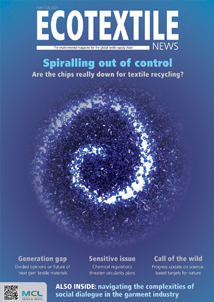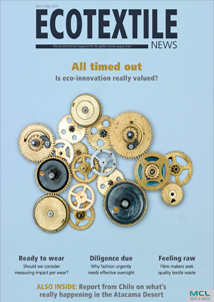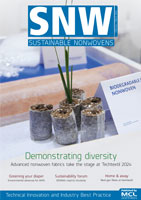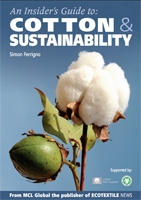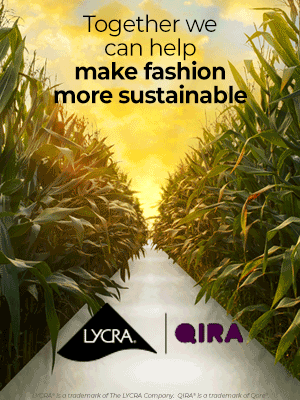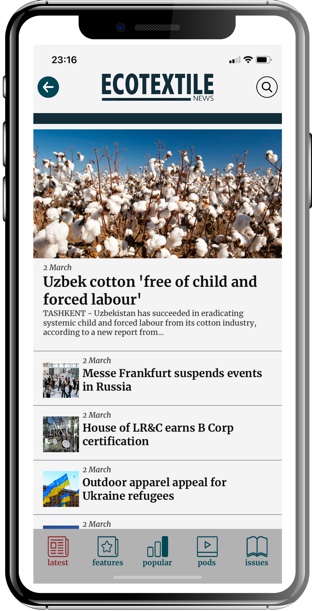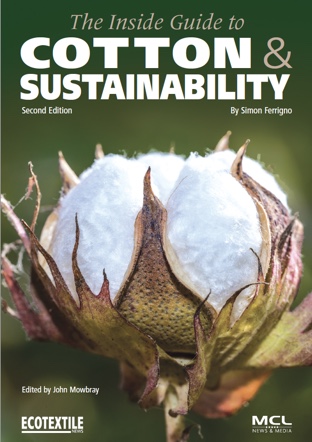WAKEFIELD – In our latest Ecotextile Talks podcast, we hear how apparel brand Timberland worked together with Lenzing to overcome a variety of challenges to launch a new traceable apparel collection that has credible, measurable, environmental credentials.
In the podcast, Krishna Manda, vice president corporate sustainability at Lenzing, and Roberta Vernocchi, senior materials manager at Timberland talks listeners through a new Fall 2022 collection that uses Tencel Refibra fabrics derived from a combination of sustainably sourced wood pulp and recycled cotton.
“As a brand Timberland has this vision for a greener future, which means we look for new materials and innovation to reduce our environmental impact,” said Vernocchi, “Our outdoor customers are not just looking for a new aesthetic but have the environment in mind … and we need to differentiate and add some value to our core outdoor products other than just using cotton.”
One of the reasons why Timberland chose to work with Lenzing is that it makes it easy to ‘scale-up’ a project, she said, and so that Timberland designers already have a wide palette of material options available to them.
Additionally, Timberland wanted to meet some of its goals around circularity, and especially in the EMEA region where it sources hundreds of thousands of cotton t-shirts from Turkey and although the cotton scraps from the fabric cutting operations are not incinerated or wasted, Vernocchi notes they are usually downcycled. Using these scraps to help make Refibra fibre – using a mass balance approach – seemed to make perfect sense.
Krishna Manda agreed, saying that around 10 per cent of global fibre consumption, or around 5 million tonnes of textile fibre is wasted within the textile value chain itself.
“About 75 per cent of the global mill consumption is estimated to end up in landfill each year, so we developed Refibra fibre as a way to help solve this problem and to feed into the circular economy.”
It hasn’t always been a straightforward process though. There must be some cast iron way of actually proving that Refibra fibre has actually been used in the Timberland garments at point of sale.
Manda explains to Ecotextile Talks host Phil Berman that Lenzing has several ways to do this using technology to identify Refibra fibres in the yarn, fabric, or garment form, along with blockchain to make sure the waste material used in the fibres is derived from garment scraps.
Our guests also explain to listeners why Refibra was developed in the first place – and how it can contribute to circularity in our industry.
Subscribe to our podcasts and radio shows by following us on Apple, Google, Spotify and Amazon Music, to automatically get alerts when we launch a new Ecotextile Talks Behind the News podcast.








